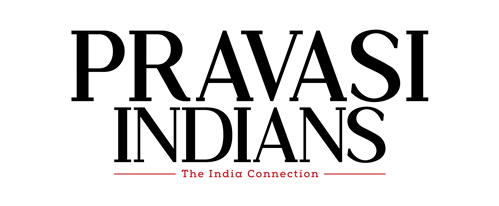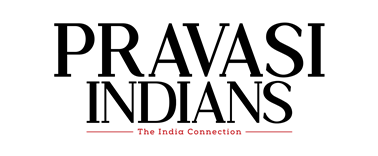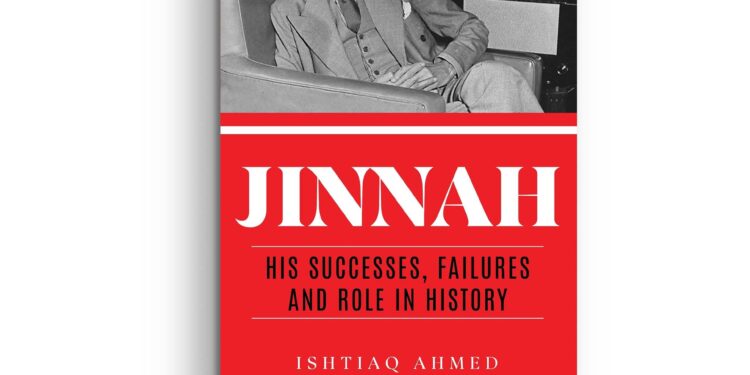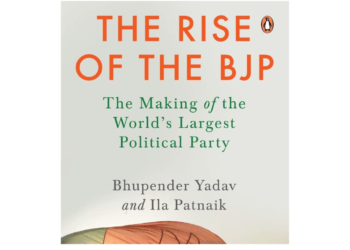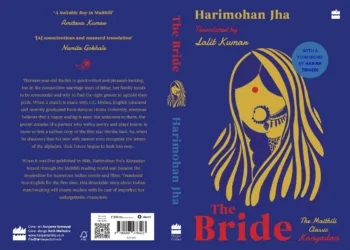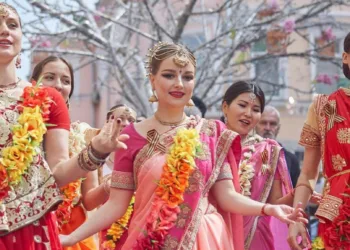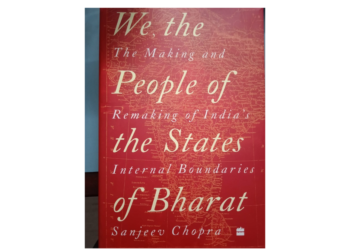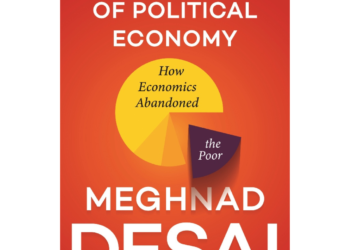This is indeed a weighty book – both literally and metaphorically. This is how I described it when introducing Ishtiaq Ahmed at the (online) Kolkata edition of Valley of Words (VoW). The book went on to receive the PFC-VoW award for the best nonfiction work published in India in 2021.
By DR SANJEEV CHOPRA
The writer is a historian, public policy analyst, and Festival Director at the Valley of Words, Dehradun. Until recently, he was the Director of the Lal Bahadur Shastri National Academy of Administration, Mussoorie.
Jinnah: His Successes, Failures and Role in History is a magisterial work spread over 800 pages and is based on exhaustive research on the writings and utterances of Muhammad Ali Jinnah from the time he entered public life. As silence is also a form of communication, Dr Ahmed also notes the critical moments when Jinnah ‘spoke’ by
choosing to remain quiet! Till the publication of this book, the mainstream understanding of Jinnah came from the works and writings of Stanley Wolpert, Hector Bolitho, and Ayesha Jalal – all of whom raised him to a pedestal. While Wolpert and Bolitho asserted that Pakistan was created by him, Jalal’s argument was that Jinnah’s ambition was not the creation of Pakistan but recognition as being the sole spokesman for Indian Muslims. This would to some extent explain his reluctance to share the stage with two formidable leaders of Muslim majority states who could have posed a challenge to him: His Exalted Highness the Nizam of Hyderabad and Sheikh Mohammad Abdullah in Kashmir.
While their assertions are true, based on their selection of facts, to get to the whole truth, and nothing but the truth, one needs to read Ahmed, for he leaves out nothing. There is not one statement of Jinnah from 1906 (when he joined the Indian National Congress) till his death in 1948 as Qaid-i-Azam (Arabic: “Great Leader”) or allpowerful
Governor General of Pakistan which has not been analysed by Dr Ahmed. He identifies four stages in the political career of Mohammad Ali Jinnah: first as an Indian nationalist, then as a Muslim communitarian, third as a Muslim nationalist and, finally, as the founder of Pakistan. Each stage is historically contextualised, and politically theorised. The first three unfolded against the backdrop of British rule, and the fourth after Pakistan had come into being. However, as the rise of Jinnah and the Muslim League (ML) in Indian politics is intertwined with the history of the Congress as well as the worldview of its principal leaders, Gandhi, Motilal and Jawaharlal Nehru, Azad, Bose, and Patel, it makes for a fascinating read – for it is also the story of India’s independence, as well as the machinations of the Empire in delaying first the Dominion status, and then the independence of the country.
The book vidly describes his contribution to the Lucknow Pact of 1916, which won him the epithet of being an icon of Hindu-Muslim unity. Speaking in 1916, Jinnah had said, “this country has not to be governed by Hindus, and let me submit, it has not to be governed by the Muslims either, or certainly not by the English. It must be governed by the people and the sons of this country.” However, over 1920-29, he began arguing that Muslims were a distinct community, and sought constitutional safeguards that would prevent the perceived Hindu majoritarian domination in a united India. In the all-party convention held in Calcutta in 1928 to discuss the Motilal Nehru report, the main sticking
point was whether the residuary powers should be with the Centre or the states. Jinnah stuck to his resolve that the residuary powers would be with the provinces. Ahmed avers that the British did their best to ensure that the gulf between the Congress and the League became unbridgeable: that was the guarantee for the Raj to continue for longer.
The third phase of Jinnah’s activism was Muslim nationalism. The core argument advanced during this phase was that Indians were not one nation but two nations – Hindus and Muslims – and that Muslims were not a large minority, but a political nation entitled to selfdetermination. But this was not all. He stretched the argument to state that, other than the Muslim League ML, no other party was ‘representative’ of the Muslims. Not only was this argument conceptually flawed, it was also empirically inaccurate for the Muslims in Punjab, Bengal and the North West Frontier Province (NWFP) were certainly not with the ML. This was borne out in the election results held after the GoI Act of 1935, when the ML could not make a dent in the Muslim majority provinces of Punjab, Bengal and the NWFP. However, as Ahmed correctly points out, this period also saw tactical mistakes (or blunders!) by the Congress in vacating the political space in 1939, thereby making it possible for the ML to occupy centrestage when the Empire ‘needed all hands on deck’ for the World War II. If the Congress under Gandhi took its idealistic opposition to the extreme, Jinnah precisely leveraged those situations to extract the relevant concessions from the Raj. We also learn how the Communist party in India tagged behind their Soviet mentors, refused to think independently, and provided the ‘theoretical construct’ for the creation of Pakistan. But Jinnah was always suspicious of them, and the Left soon became peripheral to the politics of Pakistan.
In many ways, Jinnah was also lucky. Many of those who could have contested his leadership simply passed away. They included the premiers of Punjab and Sindh, as well as the influential leader of the Unionist party, Sir Chottu Ram, who could have held the party together against the onslaught of the ML.
Ahmed’s book serves the purpose of looking at Jinnah’s life with greater objectivity. True, Jinnah overcame several obstacles, but whether he could be cast in the mould of a
Carlyle’s hero is doubtful. For, unlike Gandhi, he did not proffer any new way of dealing with the historical situation. Gandhi brought to political theory the insistence on the
means being more important than the end. He was also uncompromising in his resolve to settle issues through non-violence and Satyagraha. Even as he was able to get his
way with the Congress, there were many leaders in the Congress who had their own perspectives: Patel, Nehru, Azad and Kriplani, among others. Jinnah, on the other hand, was determined to be the ‘sole spokesman’, and he did all he could to achieve his aim of creating a separate state for Indian Muslims – whatever the cost or consequences.
In fact, Gandhi emerges as the real hero in the book. His letter to Lord Irwin in which he pleads for sparing the life of Bhagat Singh is a fine example of draftsmanship: “Popular opinion rightly or wrongly demands commutation. In the present case the chances are that if commutation is granted, internal peace is most likely to be promoted. In the event of execution, peace is undoubtedly in danger.” He ends the letter by saying, “Charity never faileth.”
It is true that at the time Gandhi called him a Gujarati Muslim in 1915, Jinnah would have preferred to be known as an Indian nationalist. However, Gandhi truly and genuinely believed that everyone living in India was an Indian – and he said this to everyone who met him. There was certainly a clash in the way the two envisaged nationhood – for Jinnah, it was a nationalism based exclusively on religion, whereas for Gandhi, nationalism was territorial: he said so to the Naga leaders who came to visit him just before Independence.
One can conclude by saying that while Jinnah was successful in the short run – Pakistan did come into existence and India was divided – in the long run Pakistan has encountered many more problems than it could ever have envisaged and in this sense his project was a failure. In the long durée, history will appraise him as a person who put millions of lives at stake for his single-minded ambition to achieve political power, which he then refused to share with anyone. He did not, when he could have, put Pakistan on the path of democracy and constitutionalism: instead, he centrallised all power, postponed the making of the Constitution, reduced the states to the level of municipalities, alienated over 55 percent of the population of East Bengal with his insistence on Urdu being the sole official language, and set the terrible precedent of getting the governors to dismiss chief ministers.
One look at Pakistan today, and one realises that a nation cannot be built exclusively on religion without considering factors like language, ethnicity, and cultural hegemony. The hatred between Sindhis and Punjabis is well known, the Muhajirs, the Baluchs and the Pashtuns have their own reasons to feel alienated from the mainstream discourse.
What then are the key takeaways? First and foremost, facts may be kept under wraps for some time, but there will always be an Ishtiaq Ahmed to ferret them out from archives and oral histories. Second, religion and politics make a heady cocktail but, more often than not, it spins out of control, garrison states soon develop a logic of their own – creating a ‘deep’ state which is far removed from the pressing needs and aspirations of civil society, commercial establishments, and academia.
Last but not least, I have my own theory about recent converts trying to outdo everyone else in the assertion of their new identities. We know that the families of both Jinnah and Iqbal were recent converts, and that Lajpat Rai’s father had returned to the Hindu fold after conversion to Islam. Master Tara Singh too had been a Hindu before his conversion to Sikhism. These leaders were far more rigid in their approach – as if they had to prove a point. As local saying in Punjab goes, “a new Muslim reads the namaz
seven times a day!”
